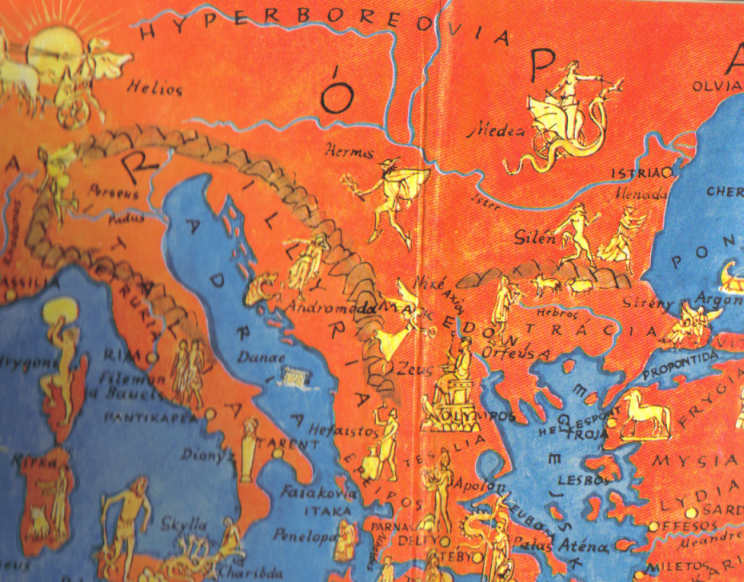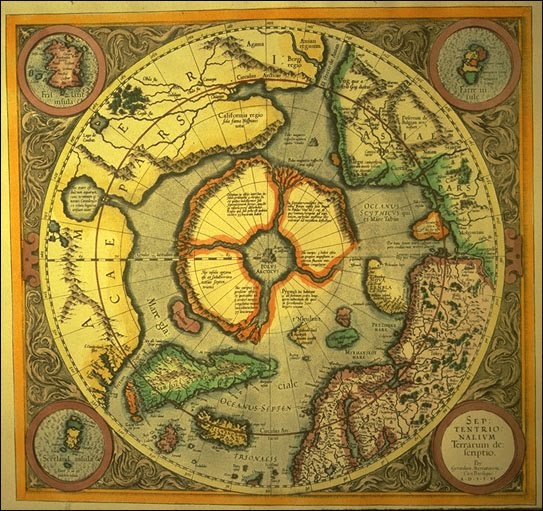To start the year, nothing better than a new installment of After The Mark of Odin and its series of Creating a Saga with which I continue to share with you all the ins and outs of how I began to make the saga of ‘The Mark of Odin’ and its universe . In this fifth installment I take advantage of the fact that I have recently released the third bonus chapter of the first book with the title ‘The Search for Hyperborea’ to delve deeper into the mythological background of the saga.
Without a doubt, the reference of said chapter, and which already appeared at the end of ‘The Mark of Odin: The Awakening’, is the character of Professor Jorgen Hågensen. Although this time with the novelty of presenting his blog, Hyperborea Exists, a blog that saw life in November 2009. Surely more than one of you has wondered who this enigmatic professor is, is he a flesh and blood person or is he a fictional character? To answer these questions you have to do a little history…
When I had the first inspiration to create ‘The Mark of Odin’ back in 2005, it was clear to me that it was very important to find a background that could adapt to what I had envisioned. As I already mentioned in a previous article, I dedicated the first years of creating the saga to documenting myself and creating what would be the complete universe in which the plot takes place. One of the great pillars of this was the mythological background. It wasn’t just about taking Norse mythology and adapting it directly to my work.
I needed a concrete story that could fit the narrative needs in such a way that it could perfectly seem like a real possibility and not just a fantasy imposed as is on the reader. That’s how I finally came across the myth of Hyperborea and discovered that it could perfectly adapt to what I had been looking for. Strangely, despite being very similar to that of Atlantis, the one in Hyperborea was practically unknown to people in general.
As with Atlantis, the myth speaks of a very advanced civilization that lived tens of thousands of years ago on an island and that suddenly disappeared without a trace. But in this case, it is not only the Hellenic and Roman cultures that have records of its existence, but the Asian ones, including the ancient Chinese culture and the ancestors of current Russia, also have mentions of it. I told myself, there it is, I have what I was looking for.

This is how I began to thoroughly study all the documents related to this myth and began to shape my own version of it. A version that would allow us to create a solid base from which to branch out the entire story of ‘The Mark of Odin’ and that would also have a strong connection with traditional Norse mythology. In this sense I never sought to give it a treatment like what other authors had done, let’s see for example Marvel and its peculiar vision of the Norse gods. I sought to work under the premise that what has come to us in the form of Nordic myths and legends were nothing more than adulterations and versions of what one day could become history, but a story that we have never been told and of which we don’t really know anything.
At this point it was becoming increasingly clear to me that I needed to go much further. I couldn’t just throw the reader into a background that was barely glimpsed in the first book without any additional support. I needed people familiar with its background even before the story of the first book was shared. Not only that, I needed my own version of the myth to be accepted at face value. But how to do it in a way that fits perfectly and is believable?
The solution came to me in 2008 during one of my stays in Oslo, Norway. I think it was the second or third time I was there because of work with Funcom and Age of Conan. During my visits, whenever I could, I tried to document myself and visit places that could inspire me and open my perspective. Thus, one day while in the port area of Oslo I saw a restored Viking Drakkar ship moored in one of the docks. There were many tourists taking photos there. It was an image that was saved in my retina and that waited for its moment. This was after reading an article on underwater archeology that finally completed the equation and I was able to ask the following questions.
What if years before launching the book there was already a renowned Norwegian professor of underwater archeology who was already studying the myth that served as its background? What if everyone who wanted to look for information about said myth found as their main source one that at first glance seemed reliable but that really introduced my version of it?
Yes, it was by answering these questions that I decided to give life to Professor Jorgen Hågensen and his Hiperborea Exist blog. It was in November 2009 when I began what would have to be the first marketing phase for ‘The Mark of Odin’ with the launch of the blog and the presentation of what would be one of the relevant characters within the saga. I was aware of the complexity of doing something like this and that it was the first time it had been done. That it was a risky bet to dedicate time and resources to a project of these characteristics and more knowing without having any guarantee of achieving the desired objective.

Initially the blog entries were dedicated to introducing readers to Norse mythology. These articles followed the version of the different official sources until today, but with subtle modifications and arguments aimed at reinforcing the background of the book. They were interspersed with others with specific topics, apparently unrelated, but which continued to reinforce the idea I was looking for as one focused on explaining the reasons behind the disappearance of the Neanderthals. In the end it was taking real news and sources and shaping them in such a way that they reinforced again and again the idea of the myth of Hyperborea that appears in ‘The Mark of Odin’.
In its second phase in the blog, a kind of pseudo prologue had to be made of Professor Hågensen’s research and how he had become involved with the myth of Hyperborea to link directly to the plot of the book itself. And although initially this character was going to be completely external to the story as it developed, I began to see the great potential for him to form an active part in certain moments of the saga’s plot. A fact that you have already begun to glimpse with the last bonus chapter and that you will continue to check when its extended level 1 story and the second book of the saga come out.
So here you have it, one of the best kept secrets I have had throughout these years finally revealed. I must admit that I never imagined that so many people would take Professor Hågensen and his research as real. The blog has had more than seven hundred followers in these years and when it reached its final phase with the events narrated in ‘The Search for Hyperborea’ it was not only normal people who showed their support, but also institutions. And the most incredible thing, in all this time only one person took the time to investigate and discover that Jorgen Hågensen supposedly does not exist. At least, not with that name. And, who can assure you that this article is not another attempt to cover up the truth about Hyperborea and make you believe that it is just fiction?
Everything is connected!
Xavier Marcé

